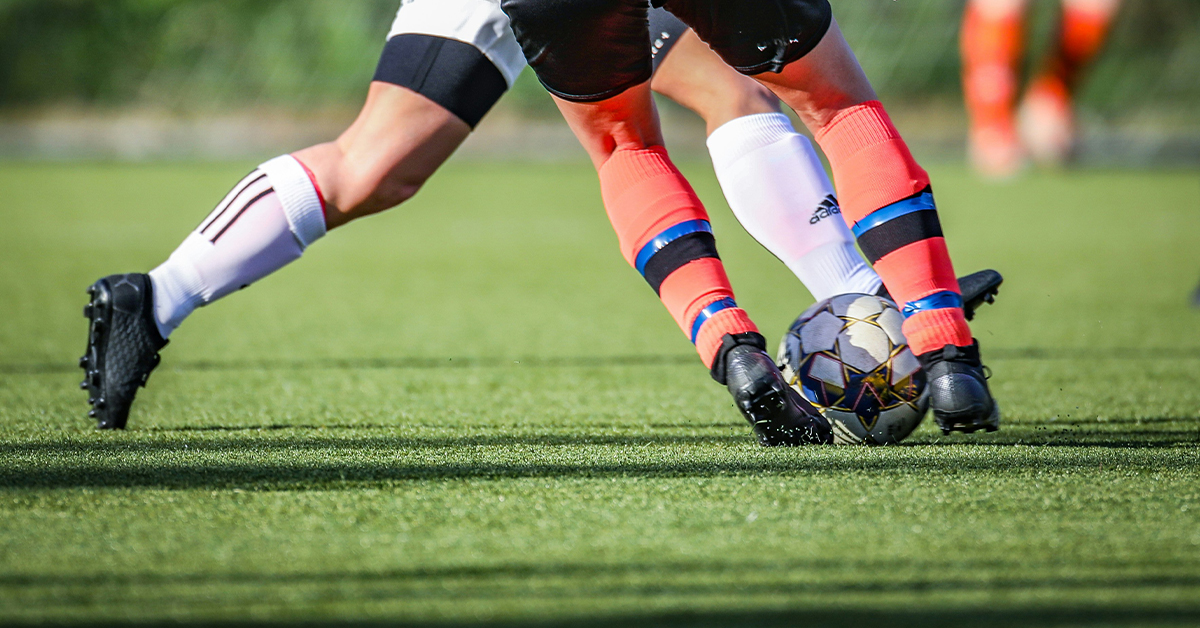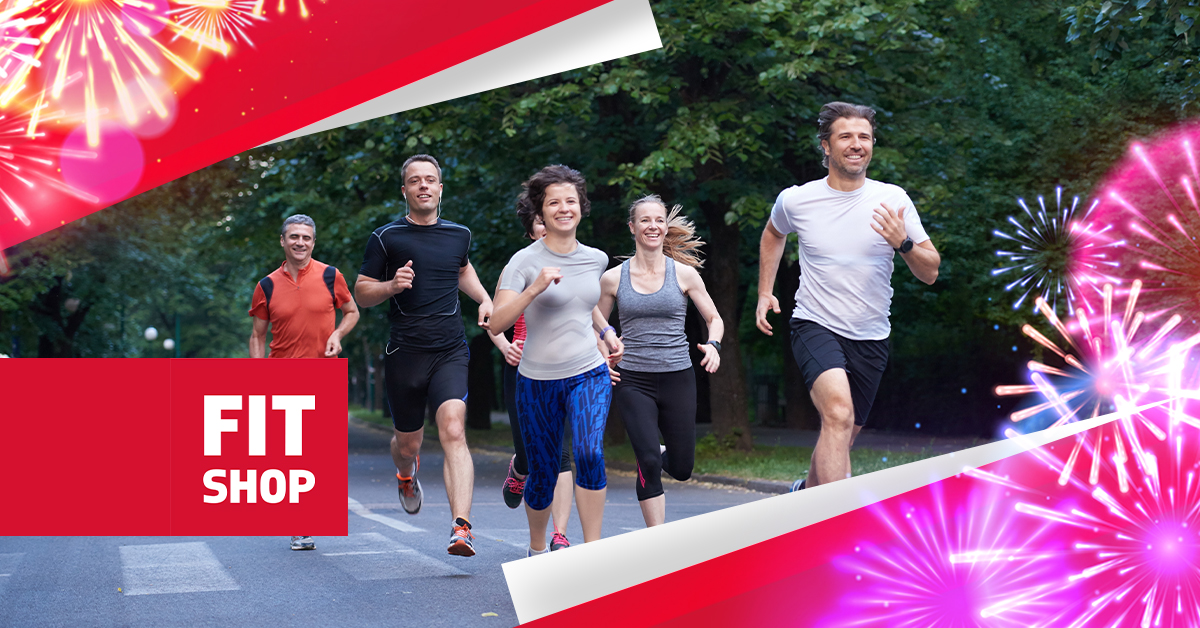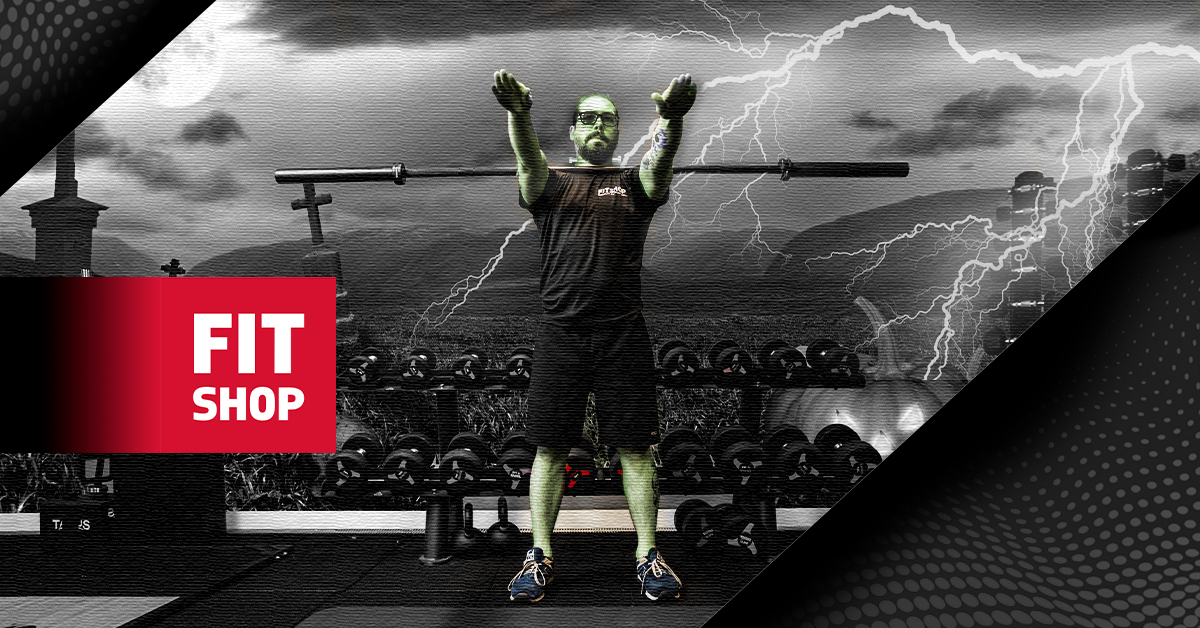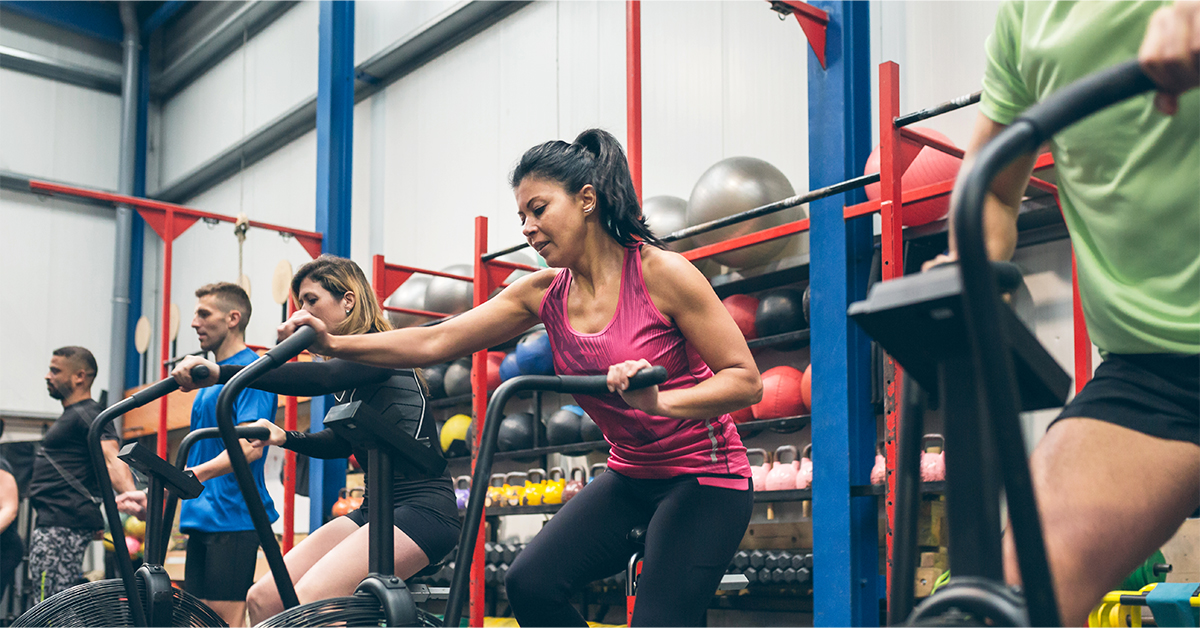Kick Off Your Fitness Goals with Football Training Techniques
With the UEFA Euro 2024 competition right around the corner, the football spirit is in the air! Whether you enjoy a kickabout with the kids, are part of a club, or play professionally, Fitshop is here to give you some training ideas to up your game and keep you on target for your fitness and sporting goals.
Football Focus
Football training is a dynamic process that requires a multifaceted approach tailored to your specific position. Strikers, for instance, may benefit from focusing on power and speed, while midfield players might need to prioritise endurance. Defenders, on the other hand, require a balance of strength and agility. But here’s the best part – even if you’re not a competitive player, football training techniques can inject a dose of fun and engagement into your workouts.
Power Play
When it comes to power, there’s more to the beautiful game than kicking a ball hard. In football, we must consider muscle development, muscle flexibility, and explosiveness.
For sport-focused training, it’s crucial to exercise effectively. Squats are an excellent compound exercise that targets multiple muscles in the lower limbs. However, simply doing four sets of ten squats with a five-minute rest isn’t ideal for improving sporting performance. Instead, let’s consider playing with exercise tempo.
Tempo Training: The Game Changer

Adjusting the tempo of your exercises may seem like a simple change, but it can significantly impact your performance. Exercises generally have two phases: eccentric (the lengthening of the muscle) and concentric (the shortening of the muscle). Most gym goers will perform a bodyweight squat with a matching pace in their eccentric (lowering into the squat) and concentric (standing back up) phases.
Here is a way to add power-focused tempo training to your squats:
- Eccentric Phase (Lowering): Slow down to 3-4 seconds to increase muscle tension and control.
- Isometric Hold: Pause at the bottom of the squat for 1-2 seconds to build stability and strength.
- Concentric Phase (Rising): Explode upwards quickly to train for power and explosiveness.
The eccentric and isometric phases are slower, adding time under tension to encourage muscle growth and stability. The concentric phase is then an explosive return to the standing position, causing you to focus on power. An advanced and more challenging adaptation could include a jump at the top of the concentric phase.
Explosive Plyometrics
When we include the jump in our squat example, we are adding a plyometric element to the exercise. Plyometrics refers to the elasticity or “plyability” of the muscles. Plyometric exercises are a great way to increase the explosive power of the muscles.
It should be noted that plyometric exercises tend to involve a lot of jumping and springing. When attempting plyometric exercises, be sure to check your workout area and surroundings for hazards and be aware of your own capabilities.
Plyometrics for Football
In our squat example, we mentioned that training plyometrically could increase jump height for winning headers. However, plyometrics are also great for other explosive efforts such as sprinting, performing powerful kicks, and rapidly changing direction. Another added benefit is injury reduction due to the plyometrics helping to strengthen tendons and ligaments, keeping your players in the game.
Advanced Strength Building
For clubs and players looking to get serious with their training, focusing on functional development is essential. Power sleds are amazing tools for leg development, and there are outstanding products that are revolutionising how we think about sled training. Fitshop is proud to be a supplier of Torque Fitness’s Tank Power Sleds, such as the M1, M4 and MX. Torque’s products are utilised by Chelsea, Tottenham Hotspur and Newcastle United football clubs to provide a unique and versatile way to train.
Technical Prowess

We love seeing players achieve feats of agility and technical skill. While we can’t all have moves like Ronaldinho, there are fun and useful ways to develop these skills. A growing international trend is Teqball, a football-based technical sport played on a curved Teqtable. In this sport, players use their football juggling skills to outdo their opponents in a table tennis-style match.
Teqball makes for a great football-adjacent activity for technique-based play, but when it comes to honing the skillset, there are a number of options that can be added to your training sessions. When we think about technique from a footballing perspective, we must consider agility and proprioception.
Agility Training
What do we mean when we say we want to train agility? We can all identify when a person is agile, but from a training perspective, it is a little more complicated. Agility often gets confused for speed, which is an aspect of agility, but what we are looking to train is the effectiveness of acceleration, deceleration and the change of direction at pace.
Sprint tracks are great tools for gyms and sports clubs for agility training. They provide a framework while training sprints and sprint deceleration. For example, using the 10m Taurus Sprint Track, a player can train by sprinting to 6m, decelerating to 10m, and sprinting back to the starting point. Agility training equipment such as agility ladders, mini hurdles, cones and sprint parachutes are great for adding complexity and challenge to your workouts.
Proprioception
Proprioception is often referred to as hand-eye coordination. However, it is a bit more complicated than that. Proprioception is your body’s ability to sense movement, action and location. Essentially, it is your body’s awareness of itself within space.
When looking at proprioception from a footballing perspective, passing and controlling the movement of the ball is reliant on the body’s proprioception. Dribbling drills, passing challenges and target practice are all perfect for increasing your proprioception. Footballers need to be able to travel with the ball at speed whilst looking for passing and striking opportunities. Being able to track where the ball is without looking at it, passing to a player and receiving the pass are all reliant on player proprioception.
Balance trainers are a great way to develop proprioception. Training your balance is beneficial for all gymgoers and can have long-lasting positive effects, especially as we get older. Bodyweight exercises are excellent choices for balance trainers. You may find that simply stepping on the balance trainer can provide a challenge, so be sure to use it with a partner for support or a wall if you are training by yourself.
Recovery and Flexibility

All sportspeople, gym enthusiasts, and fitness dabblers should take the time to work on their flexibility. Flexibility training is a great way to cool down after a hard session, and it should be taken as seriously as any other exercise. Dedicated flexibility training should be performed after a significant warm-up or at the end of a workout session to avoid injury.
A comfortable gym mat is paramount, and for players who have tight muscles or are starting their flexibility training, resistance bands can be a great assistance tool for many stretches. Training at all levels is hard work, and DOMS (Delayed Onset Muscle Soreness) is a necessary evil that comes with growth. Flexibility training is one way to lessen muscle soreness, but massage guns can be a great option for those who want to take their recovery to the next level. Foam rollers are also useful for working sore muscles using body weight.
Golden Score
Football training requires a multidisciplinary approach, and this blog has only scratched the surface of how to approach this type of training. Functional strength, agility, and flexibility exercises are imperative to people who are training with sports in mind. Balancing workouts with football practice is also an important consideration that we have not covered in this blog, but time on the pitch playing the game with teammates is also essential to development.
Join us next time on the Fitshop blog, where we will discuss football gym design to give you ideas on how to equip your club for success!




Post Comment